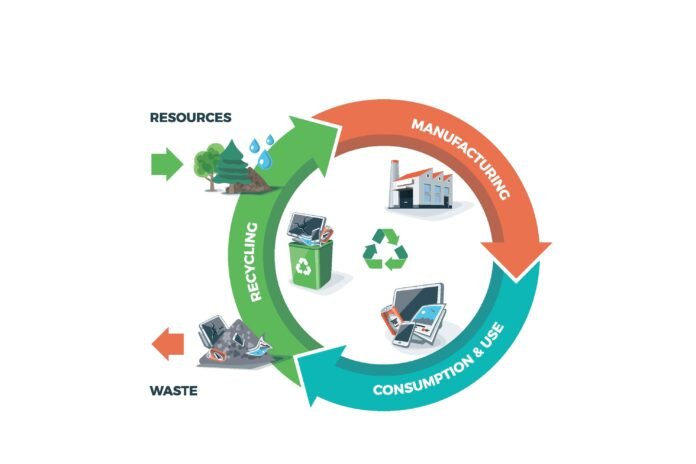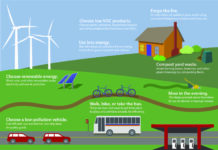As the world continues to evolve and expand, the incessant demand for resources is putting an enormous strain on the environment. The outdated and unsustainable linear economy model, known for its “take, make, and dispose” approach, is no longer viable, and it’s time to shift towards a more sustainable circular economy model. This circular economy model is founded on the principles of keeping resources in use for as long as possible, reducing waste to a minimum, and keeping materials in the loop through recycling, refurbishment, and reuse. In this regard, technology is expected to play an indispensable role in promoting a circular economy by enabling more efficient resource utilization, reducing waste, and facilitating the transition to a more sustainable economy.
Reducing Waste in Production
One of the most crucial areas where technology can promote a circular economy is by reducing waste in production. In the traditional linear economy model, resources are often used once and then disposed of, resulting in significant amounts of waste. On the other hand, the circular economy model aims to reduce waste by keeping resources in use for as long as possible. Advanced manufacturing technologies such as 3D printing and additive manufacturing have proven to be helpful in reducing waste by enabling more efficient and precise production. These technologies create products layer by layer using digital models, which minimizes material requirements and waste generation. Additionally, producing products on-demand and close to the point of use can significantly reduce transportation emissions and inventory levels. Furthermore, sensors and data analytics can help in reducing waste by monitoring the production process in real-time, identifying inefficiencies, and optimizing production processes to reduce waste. For instance, sensors can detect when a machine is operating inefficiently, leading to timely maintenance and repair, thus reducing downtime and waste.
Enabling Circular Business Models
Technology can also enable circular business models such as sharing, leasing, and subscription models, which encourage the sharing and reuse of resources, minimizing the need for new production and waste generation. The sharing economy, which is being enabled by technology platforms such as Airbnb and Uber, is an excellent example of how technology can enable circular business models. By reducing the need for new hotels and taxis, it promotes more efficient resource utilization. Additionally, leasing models such as those used in the automotive industry enable customers to use products for a defined period, after which the product is returned, reused, or recycled. Subscription models are also gaining momentum, enabling customers to access a product or service by paying a regular fee. Once the subscription period ends, the product or service is either reused or recycled. Companies like Rent the Runway, which offer clothing rental services, are among the companies utilizing this model, enabling customers to access designer clothes without necessarily buying them.
Closing the Loop on Waste
Technology can play an essential role in closing the loop on waste by enabling the reuse and recycling of materials. In a circular economy, waste is considered a valuable resource that can be recycled or reused. One way technology can enable the reuse of waste is by utilizing biodegradable materials like bioplastics that can be broken down through natural processes, reducing the need for landfill space and promoting more sustainable waste management. Advanced recycling technologies such as chemical recycling can also play a critical role in closing the loop on waste by breaking down plastics and other materials into their constituent parts, enabling them to be reused in new products.
By promoting the reuse and recycling of materials, technology can reduce the need for new resource extraction and minimize waste. This not only benefits the environment but also provides economic benefits by reducing the cost of raw materials and promoting more efficient resource utilization.
Conclusion
In conclusion, technology plays a crucial role in promoting a circular economy by enabling more efficient resource utilization, reducing waste, and facilitating the transition to circular business models. As we face mounting environmental challenges, it’s essential to embrace technology’s potential and integrate it into our efforts towards a more sustainable future. However, it’s important to note that technology alone cannot solve all the challenges associated with transitioning to a circular economy. It requires a concerted effort from governments, businesses, and individuals to promote more sustainable consumption and production patterns. Regulations and incentives that promote circular business models and the use of sustainable materials can encourage businesses to adopt more circular practices, and individuals can make conscious choices to reduce waste and support circular practices.
In conclusion, by leveraging technology and promoting circular practices, we can build a more sustainable future that benefits current and future generations. It’s crucial to recognize the value of circular economy models and the role that technology plays in achieving them. With the right policies, incentives, and a collective effort, we can create a more circular and sustainable economy that not only benefits the environment but also has economic benefits for all stakeholders.
Google News | Telegram















